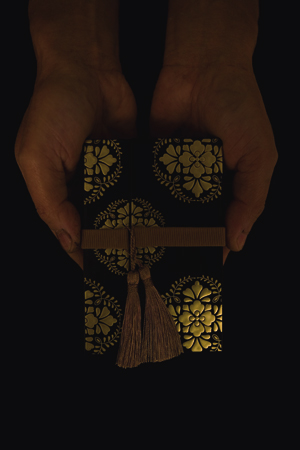Aizu Wakamatsu City is located in Fukushima Prefecture in the northern region of Japan. Natural beauty featuring Mt. Bandai and Lake Inawashiro surrounds the city, which is blessed with four highly varied seasons, each with their own colors.
The origin of lacquerware manufacture in the Aizu area dates back to 1590. Gamo Ujisato, the lord of Aizu at that time, encouraged the development of lacquerware making in his fief.
Unfortunately, internal struggles in 1868-1869, which marked the end of the Tokugawa Era(1603-1867)and the coming of the Meiji Era(1868-1912), heavily damaged the city and the industry. By the 1890s however, the city had recovered and become noted for its lacquerware industry, the fame and tradition of which continue into the present.
Connecting the Hearts and Hands
of the Urushi Artisan
Work carried out by human hands possesses a special warm and beautiful character.For each part of the process in making Aizu lacquerware, there is a specialized artisan. The artisan called “sowashi” assembles flat wood pieces to make boxes or trays that become the body of lacquerware. The “kijishi” does the same, but he makes round containers such as bowls by using a lathe. The “itamono-nurishi” applies lacquer only to flat parts such as a boxes or trays, the “marumono-nurishi” does this for round containers. The artisan who finally makes DÉCORative motifs on the coated surface is called “makie shi”. They create excellent piece of work through their dialog with the material, never opposing nature and time. Three special features of the Aizu lacquerware are as follows. With “hana-nuri”, lacquer that contains special oil is used, in order to create a gloss on the surface of the lacquerware. “Chinkin” is the technique that the surface is engraved with a fine-edged knife, then gold leaf and lacquer are embedded into the groove. “Taka-makie” is a high relief DÉCORation technique, which involves building up designs and patterns using two or more layers of lacquer. Thus, each piece of lacquerware is the product of the hands and hearts of many different artisans working together.
